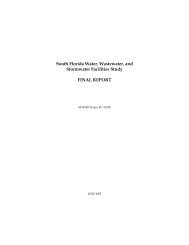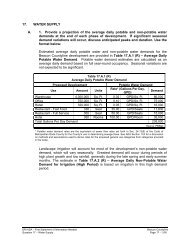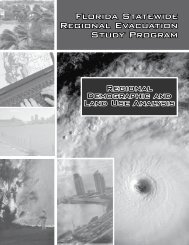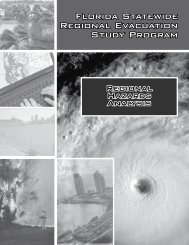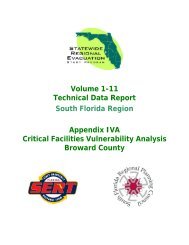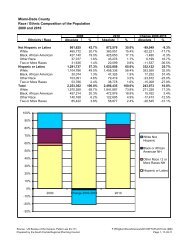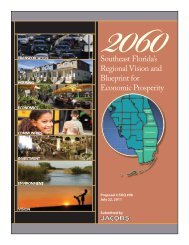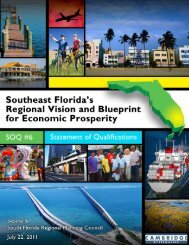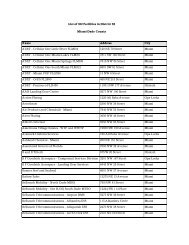Modified Blaney-Criddle for Excel
Modified Blaney-Criddle for Excel
Modified Blaney-Criddle for Excel
Create successful ePaper yourself
Turn your PDF publications into a flip-book with our unique Google optimized e-Paper software.
PART B<br />
WATER USE MANAGEMENT SYSTEM<br />
DESIGN AND EVALUATION AIDS<br />
I. SUPPLEMENTAL CROP REQUIREMENT<br />
AND<br />
WITHDRAWAL CALCULATION<br />
SUPPLEMENTAL CROP REQUIREMENT AND WITHDRAVAL CALCULATION<br />
Introduction<br />
An important aspect of successful crop production or landscape maintenance is ensuring that the vegetation receives<br />
sufficient moisture to meet its evapotranspiration demands. When rainfall is less than evapotranspiration, irrigation<br />
must be applied to meet the deficit. As part of its consumptive water use permitting program, the South Florida Wate<br />
Management District issues permits <strong>for</strong> irrigation water use. The goal of the permitting program is to provide an<br />
allocation of irrigation water sufficient to meet the deficit between effective rainfall and evapotranspiration through a<br />
drought event that has a probability of occurring once in every ten years (1-in-10). That allocation is designed to mee<br />
both the needs of a prolonged drought of up to one year as well as to meet peak monthly demands<br />
The South Florida Water Management District uses a modified <strong>Blaney</strong>-<strong>Criddle</strong> equation to determine crop<br />
evapotranspiration and the method developed by the United States Department of Agriculture Soil Conservation<br />
Service to determine supplemental irrigation needs<br />
The <strong>Blaney</strong>-<strong>Criddle</strong> Equation<br />
The <strong>Blaney</strong>-<strong>Criddle</strong> equation <strong>for</strong> estimating evapotransiration is<br />
(1)<br />
<br />
(1)<br />
m<br />
U = p t /100<br />
1<br />
where:<br />
U = crop evapotranspiration <strong>for</strong> a given period,<br />
k = an annual seasonal, or monthly empirical consumptive use coefficient which varies according to the cr<br />
p = percent of daytime hours of the year which occur during the period,<br />
t = mean temperature <strong>for</strong> the period, in Farenheit, and<br />
m = month.<br />
The equation has been modified to include:<br />
(2) k = kt x kc<br />
where:<br />
kt = a climatic coefficient which is related to the mean air



